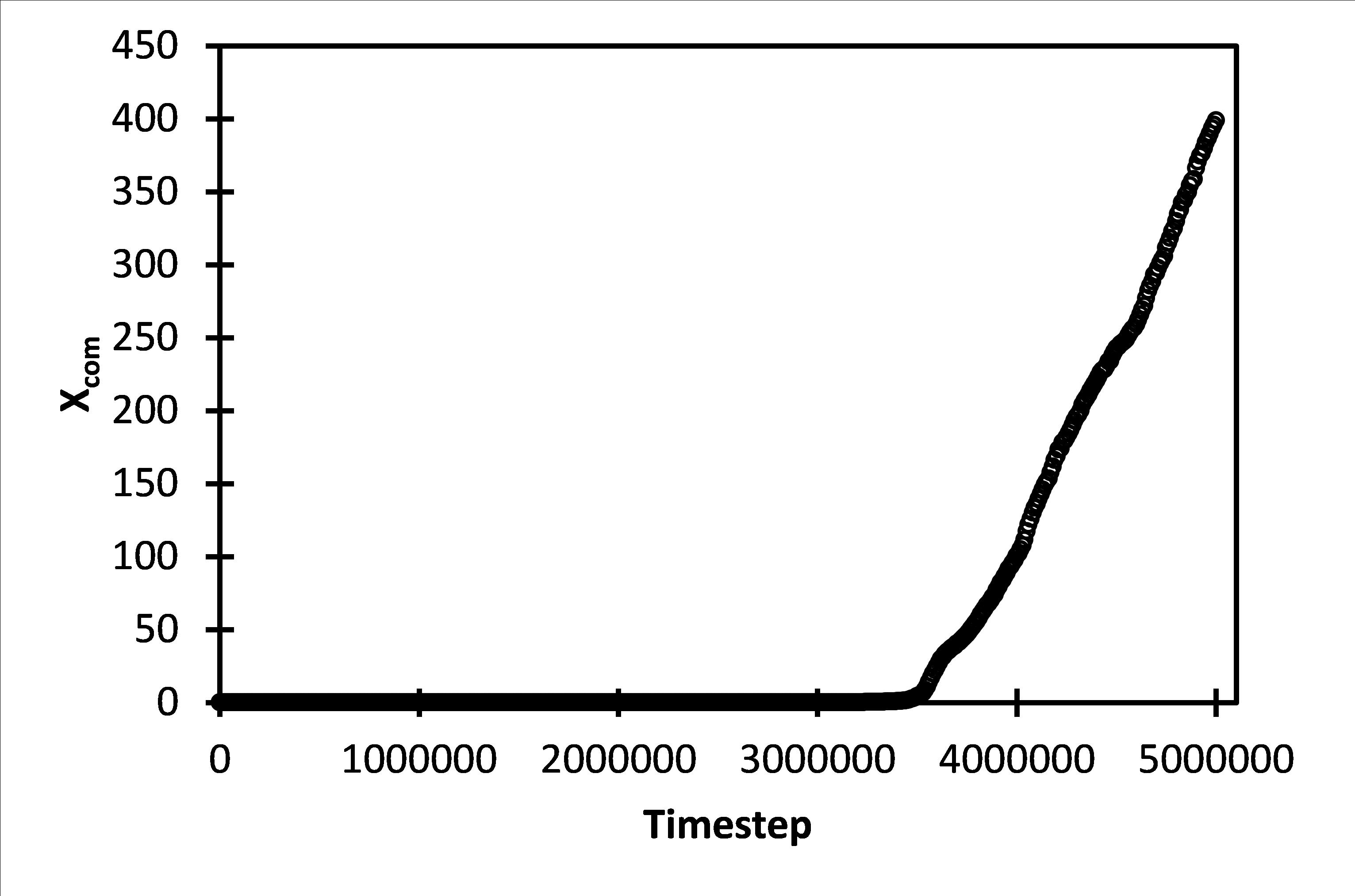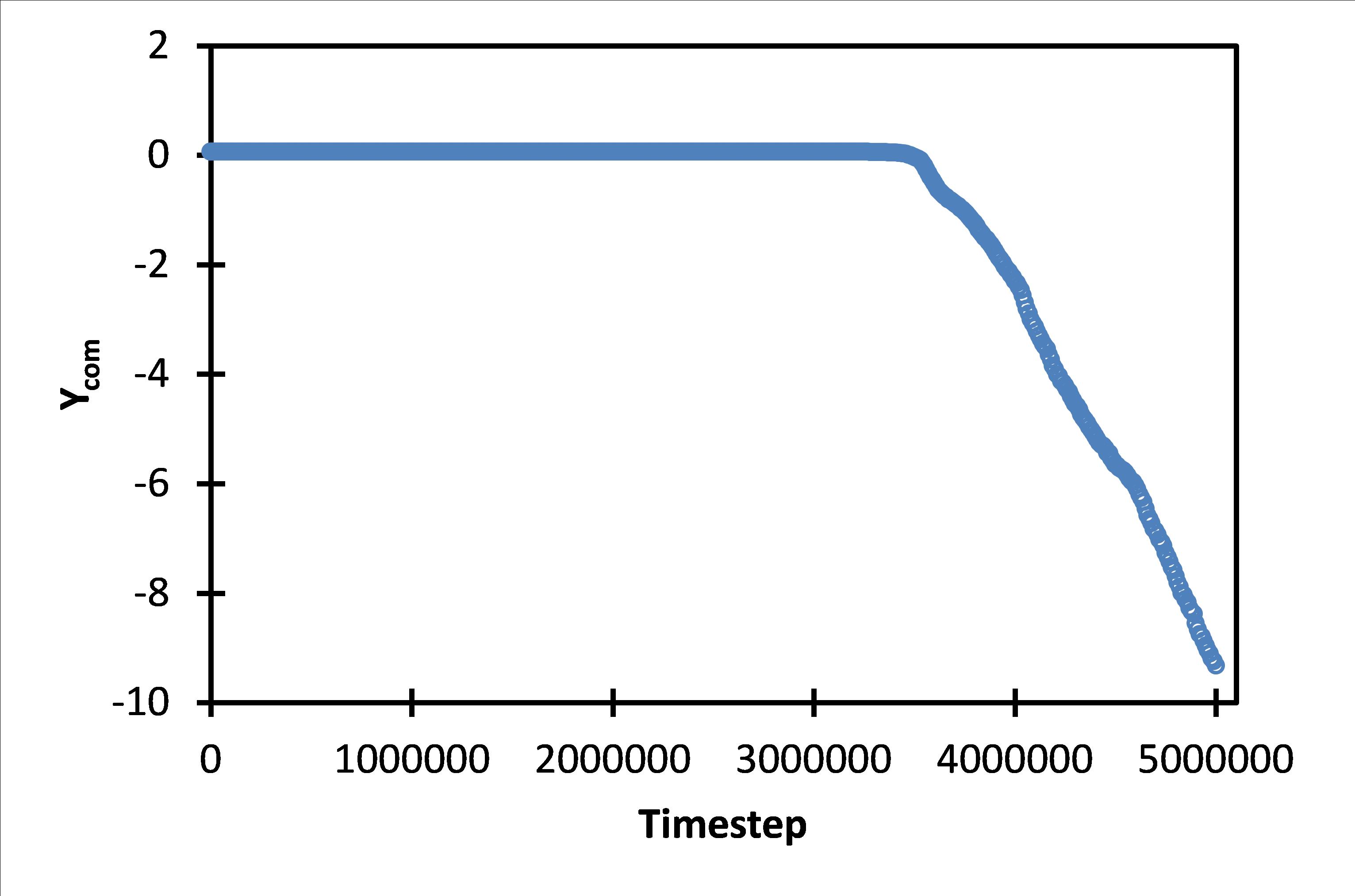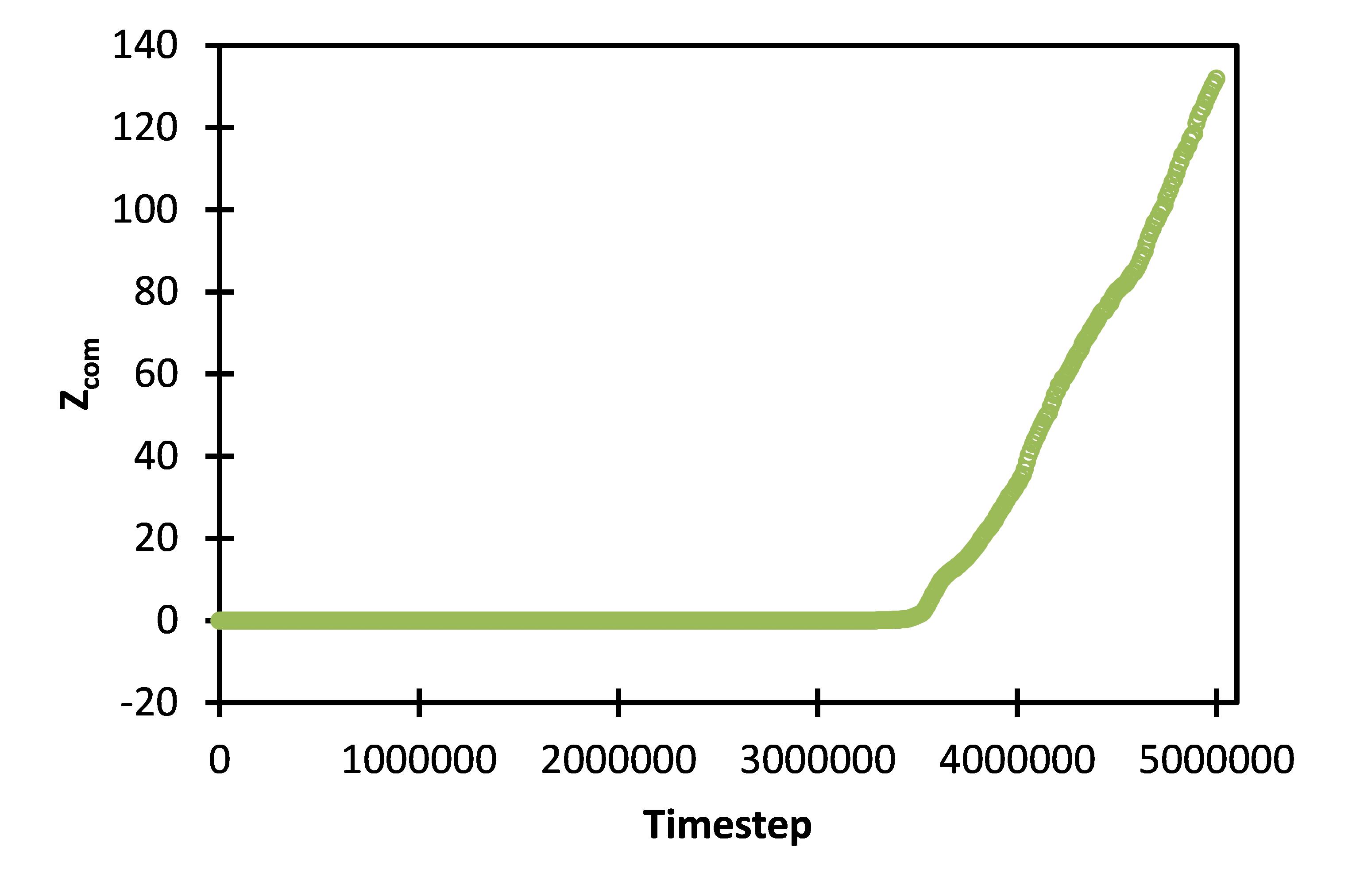Thank you for the response. I tried going to back to my input script but I am unable to determine the cause of this error. Please find attached my input script and log file. I would appreciate if you could provide pointers on what could be causing this error. Thank you.
Venkat
011011production.inp (2.97 KB)
RigidBGA00031_000_011011_T553595.prd.log (180 KB)
Thank you for the response. I tried going to back to my input script but I
am unable to determine the cause of this error. Please find attached my
input script and log file. I would appreciate if you could provide pointers
on what could be causing this error. Thank you.
a quick search through the source code reveals, that the only command in
your input that can cause the error is fix momentum; or more specifically,
the "angular" keyword used with it.
axel.
Hello Axel,
Thanks for that pointer. I was able to find source of the problem to be image flags exceeding 512. Looking at the trajectories from these run, it looks like flying ice cube problem. Using the exact same input script on a earlier version of lammps (Feb 2013), I did not see any flying ice cube problem. There is no system drift. I was going through some of the discussions on the lammps forum, I found that using fix spring might solve the flying ice cube issue. Even with fix spring, I found the box to be vibrating (no flying ice cube). I’ve couple of questions now and any suggestions/help is greatly appreciated.
- Why don’t I see flying ice cube in older lammps for the exact same system?
- Are results from older lammps expected to be consistent with latest lammps?
- Is there anything I could do about vibrating box with fix spring?
Thank you for your time.
Venkat
Hello Axel,
Thanks for that pointer. I was able to find source of the problem to be
image flags exceeding 512. Looking at the trajectories from these run, it
looks like flying ice cube problem. Using the exact same input script on a
earlier version of lammps (Feb 2013), I did not see any flying ice cube
problem. There is no system drift. I was going through some of the
discussions on the lammps forum, I found that using fix spring might solve
the flying ice cube issue. Even with fix spring, I found the box to be
vibrating (no flying ice cube). I've couple of questions now and any
suggestions/help is greatly appreciated.
1) Why don't I see flying ice cube in older lammps for the exact same
system?
i don't know. i do not own a crystal ball. sometimes semantics of LAMMPS
commands change. sometimes there are bugs removed that unveil other bugs.
sometimes there are features implemented differently. sometimes is just by
chance.
2) Are results from older lammps expected to be consistent with latest
lammps?
yes, for any physically relevant properties and for simulations that
implement the exact same physics (which may not mean the exact same input,
see 1)).
3) Is there anything I could do about vibrating box with fix spring?
there is likely something fundamentally wrong with your simulation
settings, e.g. time step too large. it is impossible to say from remote.
this requires standard debugging: start with an empty input and build your
simulation step by step and validate at each step, that everything is
working as expected and carefully observe whether each command added is
functioning as described in the documentation. the need to use fix spring
and/or fix momentum are often signs that something else is not set up
properly. there is a small chance, that you have run into a bug in the
code, but for that to be looked at you would need to come up with a small
and simple test case, that would demonstrate it. if you follow my
suggestion about debugging your input, you should learn what is causing the
problem and should then be the best person to construct such a suitable
test case.
axel.
Hello Axel,
Thanks for the response. Based on your suggestion, I went back and wrote a minimal input from scratch. I found that center of mass of simulation box is stable for little over 3 million time steps (time step size: 0.01, LJ units). After that the simulation box quickly gains speed in one direction. This can be seen in the log file (last three columns of thermo data) as well as the attached plots which shows the x, y and z coordinates of center of mass (com). I tried reducing timestep size by 10 folds and also varied the damping parameters of Nose-Hoover thermostat and all resulted in flying ice cube scenario. I have attached a simple test case (input script and data file) in case you would like to reproduce the results. I appreciate your time and help. Thank you.
Venkat



Rigid_T1500000.log (124 KB)
Rigid_test.data (189 KB)
generation.inp (2.56 KB)


